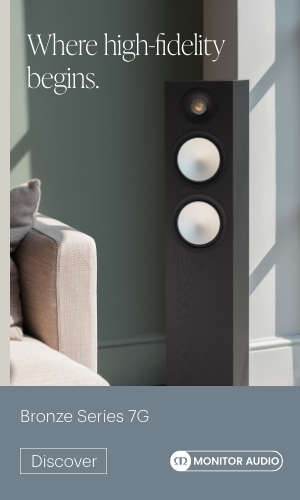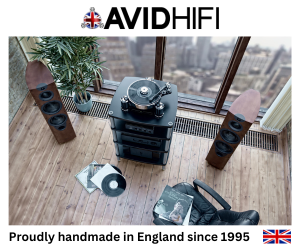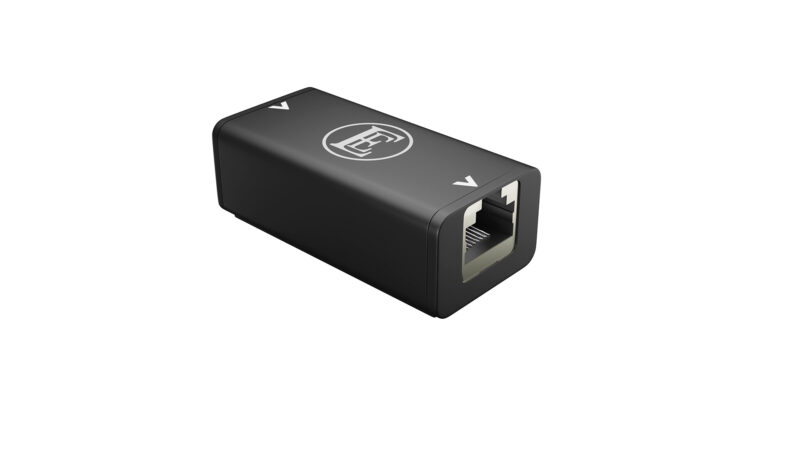The great speaker and mains cables debates within hifi circles rage perhaps less fiercely than they once did, as it’s now largely accepted that investing in dedicated hifi cabling and filtering will bring sonic benefits to our systems.
Instead the conversation these days is more focussed on the scale of the benefits and which cables and filtering systems are right for your system, and the domestic environment it resides in.
And as our homes and devices get ‘smarter’ (my fridge is apparently now smarter than me, at least according to my kids), so does the demand on the internet signal being piped around the house, sometimes to the detriment of our precious hifi’s networked units. This has led to the rise of dedicated add-ons to ensure the data flowing into our streamers and network players is a clean as it can be.
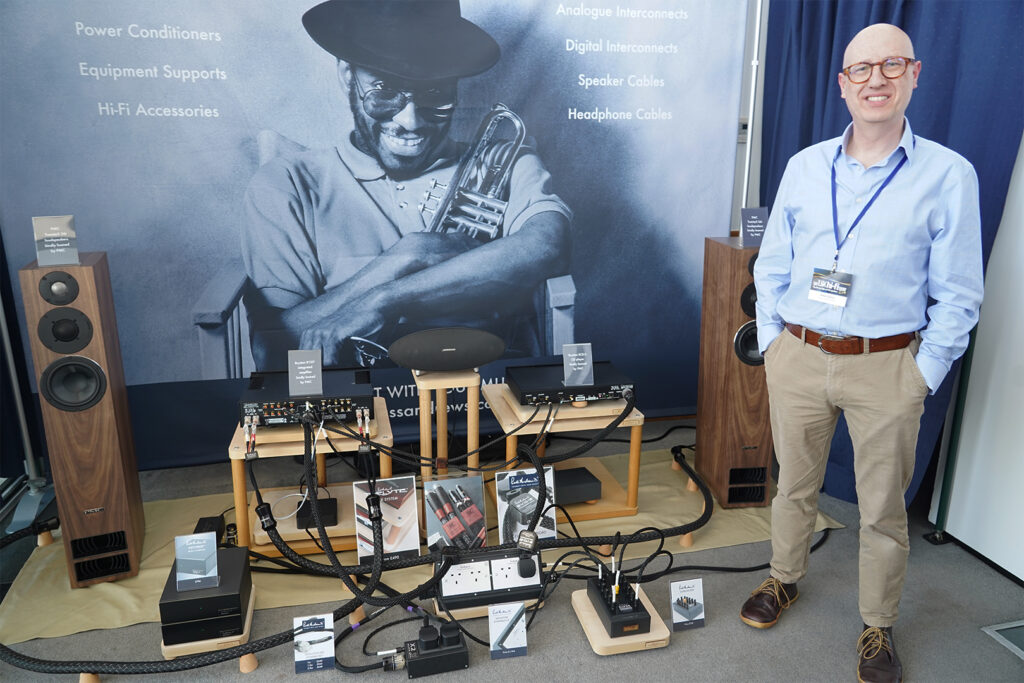
A fettler’s dream – Russ Andrews Accessories’ Simon Dalton at this year’s UK Hi-Fi Show Live presenting a wealth of cabling and earthing solution
With decades of skin in the mains and audio signal purification game, it’s no surprise that the folk at Russ Andrews Accessories have been applying their knowhow to network cables and their signals, resulting in the Network Purifier on test here.
We first experienced it at this year’s the Ascot Show alongside the brand’s Clarity Pro 2.0 System Conditioner and dedicated DC blocker add-ons.

The Network Purifier keeping company with RA’s DC Blocker and Clarity Pro 2.0 at Ascot
Get zapped
Its internals are based on the brand’s MiniZap tech, which is part of a suite of ‘Zapperator’ products for mains, interconnect sockets and loudspeaker connections. The science behind these is based on an enhanced version of a Zobel Network, designed by amp guru and hifi author Ben Duncan. Put simply, their aim is to filter unwanted noise from a given signal (you can read more about the thinking behind the tech in the original White Paper).
The Network Purifier is specifically tailored for use with streaming and computer audio gear (alongside video systems), at the ‘endpoint’ from a router or network switch before the signal enters your audio gear. The final cable between it and your streaming gear should then be kept as short as practically possible according to Russ & co.
And if you’re feeling flush you can add more Network Purifiers, for example between a router or NAS drive and an ethernet switch.
Of course many network players may already have some filtering built in, but serving them a signal that’s as noise free as it can be before it reaches your music streamer can only be beneficial, and this is where an external filter can add value.
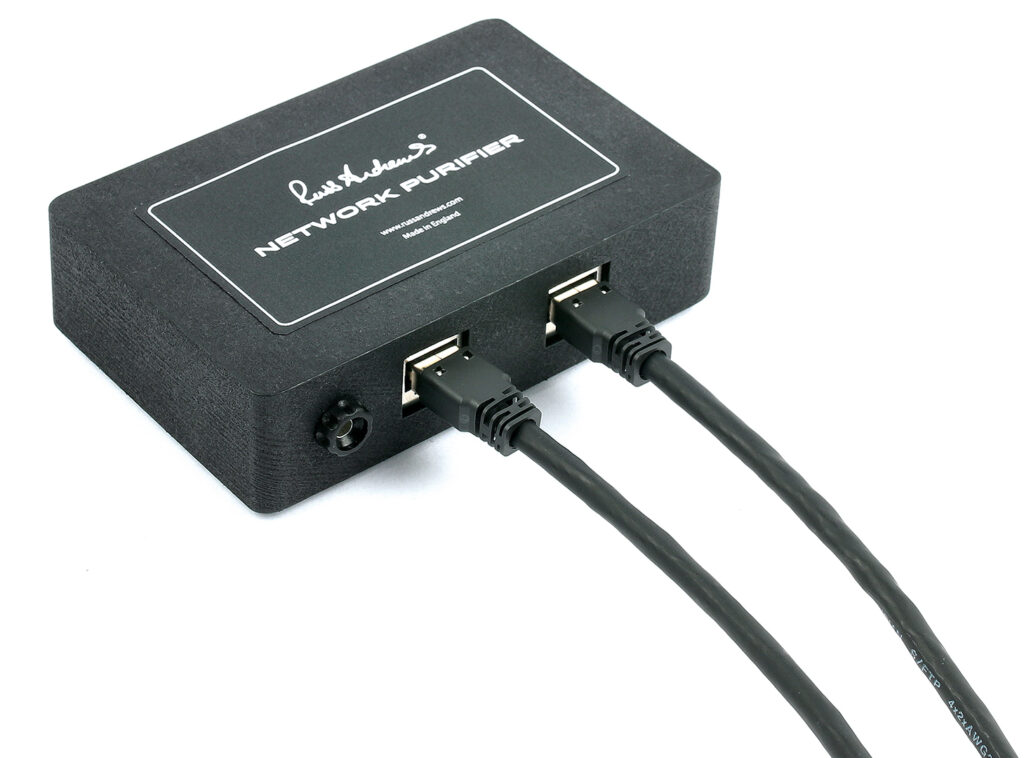
No mains is required as the Network Purifier is a passive design hosting twin RJ45 Ethernet ports. Note the 4mm grounding socket for connecting to Russ Andrews’ grounding system, fed from Kimber Kable TCSS internal wiring
Inside the Network Purifier resides eight passive MiniZap circuits (one for each Ethernet conductor strand) employing a filter that targets high frequency RF noise present on wired networks, picked up from wireless devices such as computers and mobile phones.
And with a data rate of up to 1 Gigabit per second, there’s no lag worries when pumping high data-rate audio or video files through it.
Its two Category 6 gigabit ethernet sockets (one for input and one for output) are fully shielded while the internal dual layer circuit board boasts heavy-gauge, 4oz pure copper tracks with a gold immersion finish, to protect against oxidation.
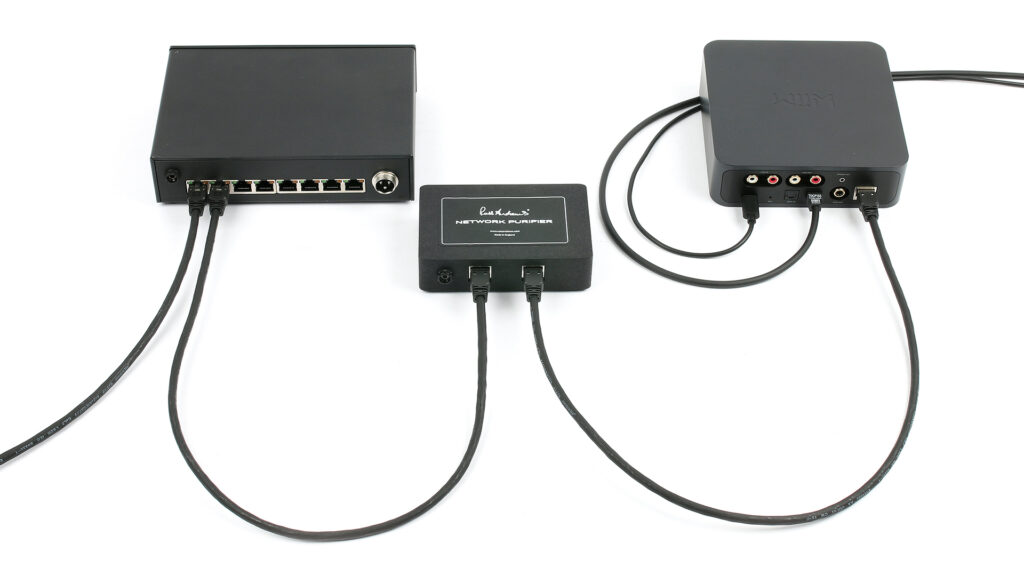
An example of a Network Purifier in action, plumbed in between an Ethernet switching box and compact music streamer
All of which comes wrapped in an in-house designed, 3D printed thermoplastic case about the size of a large fag box, albeit with much classier internals!
Performance
Lifting the Network Purifier from its case reveals a solid feeling mini brick of a product, with a clearly labelled underside. At 250g you’d hardly call it heavy, but as a notable comparison it weighs 200g more than Eastern Electric’s EE1 for example, which we reviewed back in May. And unlike the EE1, it’s designed to sit on a platform, denoted by its four chunky rubber feet to prevent it sliding around.
Plugging it in obviously takes no time at all and with no mains switch or LED lights, it really is a fit and forget product.
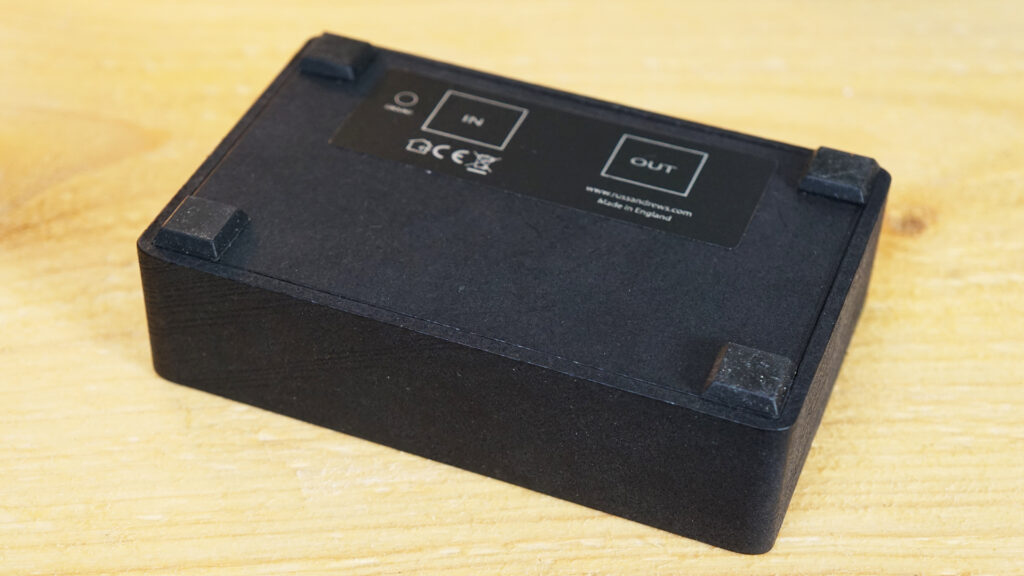
My home network consists of a fibre fed BT Hub feeding a Netgear ProSafe GS108 gigabit switch, which then feeds another dedicated GS108 in my listening space some 30m away via a CAT 7 burial cable. I then run separate heavy duty CAT 7 cables to my system, which incudes a legacy Primare NP30 DAC/network player, a more recent Primare NP5 Prisma Mk2 network player and the DAC in my Michi X5 integrated amp.
Alongside online streaming subscriptions, I also have a NAS drive attached to my home network hosting my digital music library.
With the Network Player installed 30cm downstream of the Prisma Mk2 via its dedicated Cat6 link cable, A-B testing with it in operation and bypassed reveals postively curious results.
Marcin’s instrumental version of Sweet Dreams (at 24-bit/48kHz via Qobuz) is an already clean sounding and polished recording that even without any additional filtering seems to want for nothing extra. But adding the Network Purifier into the digital chain and the differences are there, with more air and space around the opening strings, that hang in the air with greater presence compared to before. It’s subtle but in my system the difference is there.
My initial instincts that the NP makes for a more forward sound are also quickly put to bed when the minimal vocals enter the track at around a minute in, as these seem to be set deeper into the mix, adding to a sense of a denser soundstage.
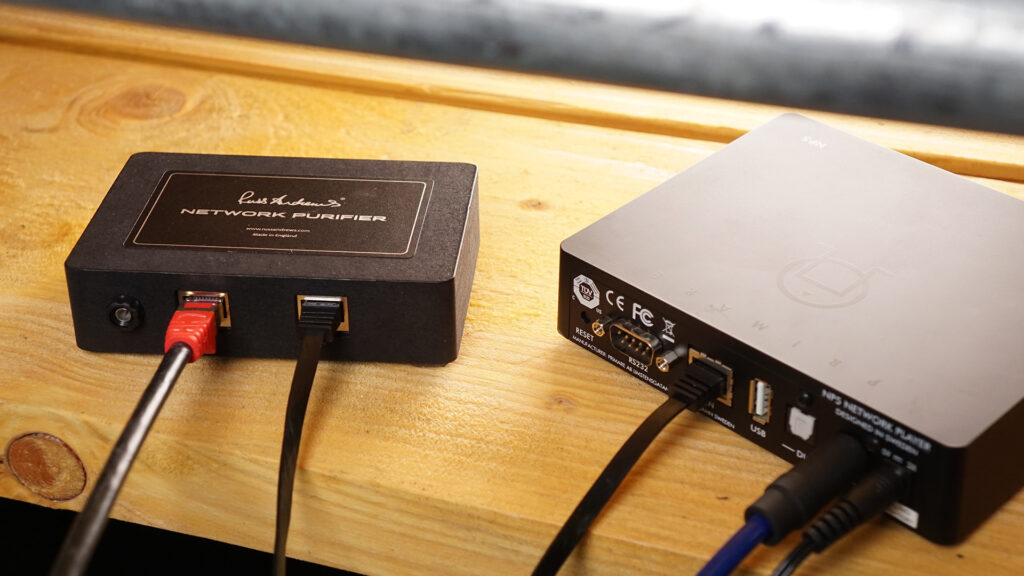
Cool, calm and collected
Testing the Network Purifier with less highly produced material such as Lyle Lovett’s She’s Already Made Up Her Mind at a ‘Red Book’ standard 16-bit/44kHz reveals the it’s sonic benefits are not just the preserve of hi-end content. A soft and mellow recording, on this track the splashy percussion, loose piano notes and gently plucked guitar stings have a tendency to smear into each other and while I love the track’s relaxed nature, I sometimes do crave more instrument separation. And with the Network Purifier this is thankfully what you get. It’s not to the levels where it’s ordering the musicians to move their chairs across the stage and stop sharing mics, but there is a sense of being able to define each one’s contribution more clearly, especially in the more complicated passages, which makes for a more engaging listen.
On more intense material such as Soft Play’s Punk’s Dead at 24-bit/44kHz where your senses are being bombarded at more extreme levels the Network Purifier’s contribution can seem less obvious on first impressions. But give it repeat listens with and without it in your system and the former makes for a much more rewarding listen. The racaus riffs of the lead guitar managing to sound both edgier yet easier on the ear at the same time. And while this may read as a contradiction, it’s the lack of noise around its edges where the appeal lies, making it easier to focus your attention what’s being pushed at you in the track. Again it’s a subtle edge being added which ultimately makes the music that bit more enjoyable.
In summary
The Network Purifier can be seen as serving two hifi system goals: improving the signals entering your chosen streamer / network player for today and also future proofing. Because as more devices join our connected homes, so does more unwanted RF interference, and having the Network Player at the business end of your connected hifi brings with it peace of mind.
In my system it brought benefits beyond my expectations, underlining why its worth investing in quality accessories like this. Highly recommended.




